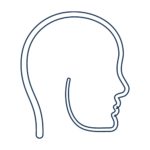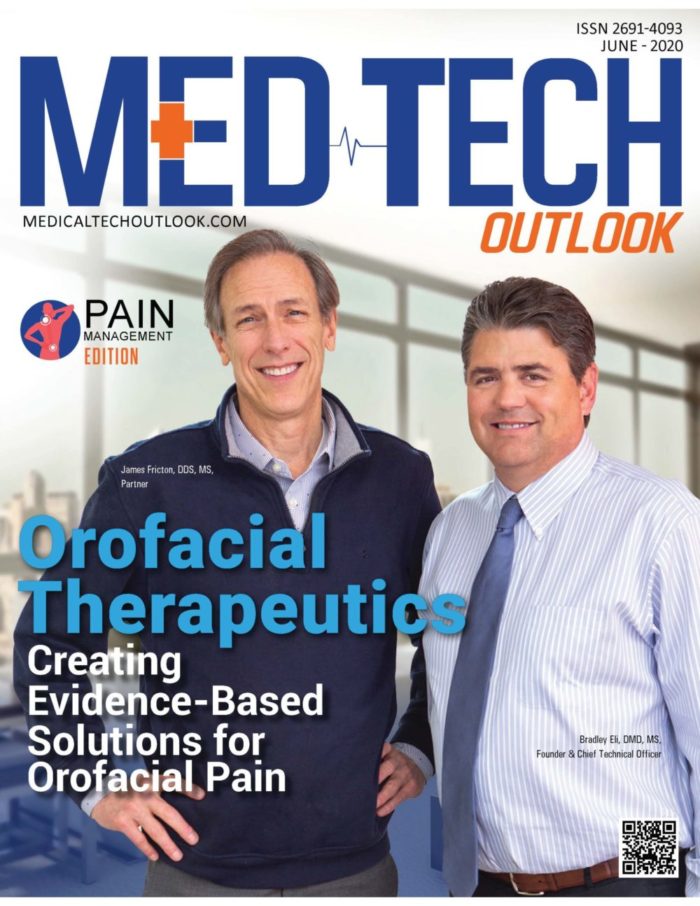What does my Neck have to do with my Jaw and Orofacial Pain?
There is a well-established link between jaw pain, neck pain and stiffness––in fact; one study found that neck pain played a part in Temporomandibular disorder (TMD) 70% of the time. This is perhaps unsurprising, as, in the human body, nothing occurs in isolation.
This article gives you a deeper insight into the anatomical links between the neck, jaw, and orofacial region in general, and how an issue in one can affect the other. Having this insight offers you a different approach to managing your TMD.
The Connection Between TMD and the Neck
TMD is a general term for conditions that affect the jaw. The broadness of this term encapsulates all the various conditions that can occur in this region. When you start to understand the complexity of the jaw, it becomes more apparent why pinpointing an exact cause for your TMD can be so challenging.
An even broader term than TMD, but one which captures its co-occurring symptoms and possible causes, is orofacial pain. It covers all issues stemming from, or somehow related to, the mouth and jaw, including headaches, neck, musculoskeletal, and neuropathological issues. It is a helpful term as it encourages this wider perspective on TMD, for both causes and symptoms.
So why is the neck such a critical area to examine when it comes to TMD? The previous study mentioned found an 82% correlation between jaw dysfunction and neck disability. When you consider that the functional movement of the jaw depends on muscle activation and joint action in both the jaw and neck, the connection between a dysfunctional jaw and limitations in the neck start to seem more obvious.
Let’s take a closer look at this area of the body, to understand why:
The Anatomy of the Jaw
Bones and Joint: You have two jaw joints, one on each side of the head. This joint is called the temporomandibular joint (TMJ), and simply by breaking its name down, you can learn a lot about it. The TMJ connects two bones of the skull: the temporal bone, located underneath your temples and extending around the lower sides of the skull; and the mandible, the lower jaw bone. The TMJ itself is located roughly in front of your ears, between a bony projection called the condylar process on the mandible, and a socket of the temporal bone called the mandibular fossa.
The mandible, the only bone in the skull that can move, and is surprisingly mobile! Test the movements of your jaw––not only can you open and close it, but, to smaller degrees, side-to-side and forward and back, all enabled by both the complex TMJ, and its surrounding muscles.
TMD can arise from issues within the actual TMJ, such as disc displacement, inflammation or arthritis. However, let’s focus on the soft tissues surrounding it because when it comes to neck pain, it is the muscles and connective tissues that are important.
Muscles: If your TMD doesn’t stem from the TMJ, then it will be considered as myofascial, relating to problems in the muscles surrounding the joint. Muscle tenderness is a key symptom of TMD, and there are several possible causes. Like all muscles, it is possible to build up excess tension, by clenching the jaw, or overuse. Certain medical conditions, such as fibromyalgia and other central sensitization syndromes, which result in chronic myofascial pain, are possibly partly due to TMD.
The joints, muscles and ligaments in the jaw work together to provide stability and movement. If you clench your teeth and place your hands on the sides of the face, you will feel two muscles of the jaw engage: the temporalis, located over your temples, and the bulging around your jaw is the masseter. There are two more significant muscles, which are smaller and deeper, the medial and lateral pterygoids. The lateral pterygoid attaches to the disc in the TMJ and is related to disc displacement.
As muscles work in combination, improper functioning in one tends to affect the others. If your TMD is myofascial, it is important to treat not just isolated muscles, but the surrounding tissues too. It may be impossible to tell which group of muscles is causing your TMD, but effective treatment can provide widespread relief.
What does this have to do with my Neck?
If you experience tenderness and tension in your jaw muscles, then evaluate the neck muscles too, particularly the sternocleidomastoids, at the front and sides of the neck, and the upper trapezius, at the back of the neck. As mentioned earlier, the muscles of the jaw and neck work together to enable movement of the jaw, but they also share another soft-tissue connection: fascia.
The fascia of the neck surrounds the muscles of the jaw. Fascia is a film-like connective tissue that encases the muscles, other tissues and organs. Although fascia relates to different anatomical regions, it is a connected network that runs through the body. If we experience tightness or an injury in one area of the body, it can affect other areas via the fascial network. As the fascia of the neck extends to the jaw muscles, it indicates how interdependent these areas are, and the significance of treating them together.
It is not only the soft tissues of the neck that can lead to TMD. A neurological cause, linked to a region in the lower brain stem called the trigeminocervical nucleus, can cause symptoms from the cervical spine to be referred to the jaw. It is also possible for a herniated disc in the neck to cause pain in the jaw.
Treatment
When seeking treatment for TMD, it is advisable to have not just the jaw, but the entire orofacial region, and the neck and back, assessed. Poor posture, in the neck and back, can affect the muscles and soft tissues, ultimately impacting the jaw. Consequently, physiotherapy, or soft tissue manipulation, can provide great relief if you experience TMD––and will likely indicate that your neck has been affecting your jaw (or vice versa).
Physiotherapists can be highly effective at working with TMD patients, but unfortunately, not all dentists seem to be aware of this. At Face My Pain, we can connect you with practitioners––from dentists to physiotherapists and more––who understand the physiological relationships in the body that can lead to TMD and help you find relief.






